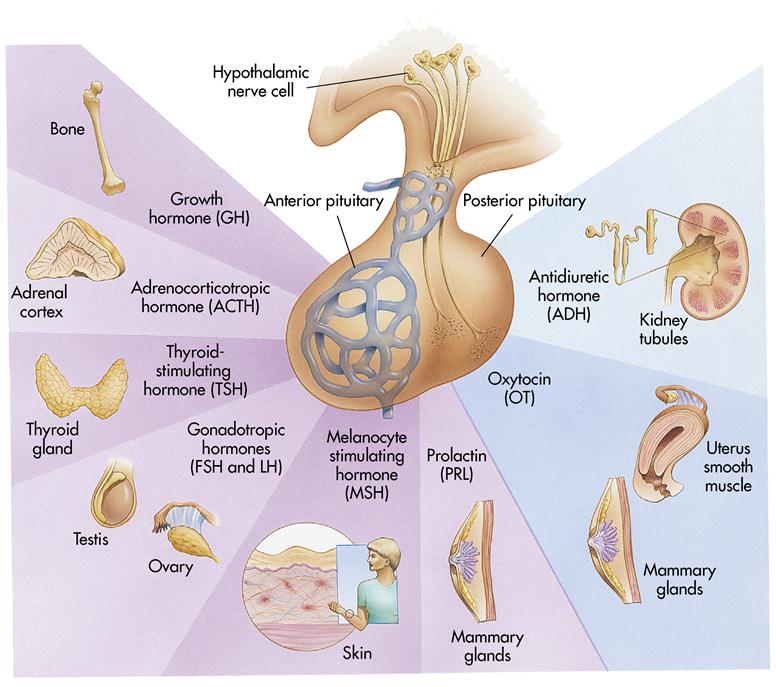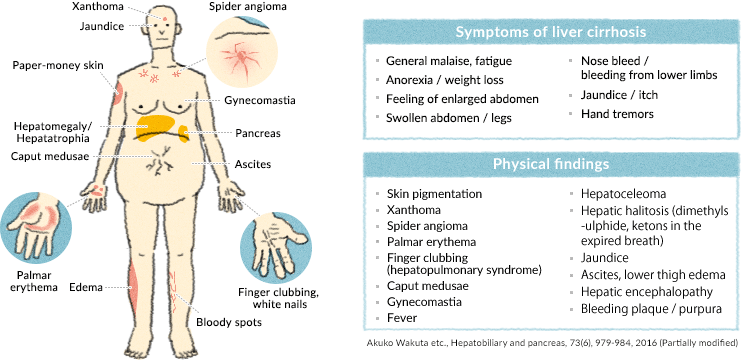Nerve Skin Disorders: Skin Signs of Neurological Diseases
What are the skin signs of neurological diseases? How do neurocutaneous disorders, neuropsychiatric disorders, and drug abuse disorders manifest in the skin? Discover the details in this comprehensive article.
Neurocutaneous Disorders
Neurocutaneous disorders are a group of congenital multisystem diseases that result in the growth of tumours in the brain, spinal cord, skin, and other organs. These disorders include tuberous sclerosis complex (TSC) and neurofibromatosis.
Tuberous Sclerosis Complex (TSC)
TSC is an autosomal dominant syndrome caused by mutations in the tumour suppressor genes, TSC1 and TSC2. Diagnosis of TSC is based on major and minor clinical criteria, with major features having higher specificity for TSC than minor features. Skin manifestations of TSC include:
- Major features: Facial angiofibromas or forehead plaque, non-traumatic ungual or periungual fibromas, three or more hypomelanotic macules, and a shagreen patch (a connective tissue naevus).
- Minor features: Multiple and randomly distributed dental enamel pits, gingival fibromas, and confetti skin lesions.
Other clinical manifestations of TSC include retinal nodular hamartomas, and lesions in the kidneys, heart, and brain. Patients often have learning and behavioural difficulties, as well as seizures.

Neurofibromatosis
Neurofibromatosis is an autosomal dominant condition with three distinct clinical subtypes: neurofibromatosis type 1 (von Recklinghausen disease; NF1), neurofibromatosis type 2 (NF2), and schwannomatosis. Similar to TSC, patients with neurofibromatosis can have learning difficulties.
Cutaneous features of NF1 include café-au-lait macules, neurofibromas of any type (including plexiform neurofibroma), axillary or inguinal freckling, and Lisch nodules (brown spots on the iris). Non-cutaneous features of NF1 and NF2 include bilateral vestibular schwannomas, meningiomas, ependyomas/gliomas of the central nervous system, schwannomas of the spinal cord, cranial and peripheral nerves, and hearing loss or paralysis.
Cutaneous features of NF2 include café-au-lait macules, cutaneous schwannoma or neurilemmoma (purplish plaques), and cutaneous neurofibromas (uncommon; indistinguishable from NF1). Features of schwannomatosis include multiple painful schwannomas in peripheral and paraspinal nerve roots, and a normal lifespan.

Neuropsychiatric Disorders and Addictions
Ataxia-Telangiectasia
Ataxia-telangiectasia, also known as Louis-Bar syndrome, is a rare autosomal recessive disorder that affects the central and peripheral nervous systems. Cutaneous telangiectasias (spidery blood vessels) develop after the age of 3 years, beginning in the corners of the eye and spreading to the bulbar conjunctiva, cheeks, ears, eyelids, chest, and skin folds of knees and elbows. Other cutaneous features include dry skin, grey hair, scleroderma (atrophy and sclerosis) of the face, arms, and hands, recurrent impetigo, seborrhoeic dermatitis, blepharitis, non-infectious cutaneous granulomas, and basal cell carcinomas.
Non-cutaneous features of ataxia-telangiectasia include recurrent bacterial or viral sinus and lung infections, immune deficiencies, dysarthria (unclear speech), and deterioration in fine and gross motor skills, often leading to the use of wheelchairs for mobility.
Sturge–Weber Syndrome
Sturge–Weber syndrome is a rare disorder that involves vascular malformations affecting the face and eye, which correspond with a leptomeningeal angioma, a vascular tumour in the brain.

Disorders Related to Drug Abuse
Skin signs associated with drug abuse include the “methamphetamine mouth” (severe dental destruction), skin excoriations and sores from picking, and track marks from intravenous drug use.
Neuropathic Itch
Neuropathic itch is a chronic and severe form of itch that is often associated with neurological conditions. It can be caused by damage or dysfunction of the nervous system, and may manifest in the skin without any visible skin lesions.
Conclusion
Nerve skin disorders can provide valuable clues to the diagnosis of underlying neurological diseases. Understanding the cutaneous manifestations of these conditions is important for healthcare professionals to recognize and manage these complex disorders effectively.
Skin signs of neurological diseases
Author: Dr Sara de Menezes, Basic Physician Trainee, Alfred Health, Melbourne, Australia. DermNet New Zealand Editor in Chief: Hon A/Prof Amanda Oakley, Dermatologist, Hamilton, New Zealand. December 2016.
Introduction
Neurological diseases associated with skin signs include:
- Neurocutaneous disorders
- Neuropsychiatric disorders and addictions
- Disorders related to drug abuse.
Neuropathic itch is also discussed in this topic.
Neurocutaneous disorders
Neurocutaneous disorders are a group of congenital multisystem diseases that result in the growth of tumours in the brain, spinal cord, skin and other organs.
Tuberous sclerosis complex
Tuberous sclerosis complex (TSC) is an autosomal dominant syndrome caused by mutations in the tumour suppressor genes, TSC1 and TSC2. Diagnosis of TSC is based on major and minor clinical criteria. Major features have higher specificity for TSC than minor features. Note that there is no single diagnostic feature, and none are specific for TSC.
Note that there is no single diagnostic feature, and none are specific for TSC.
Skin manifestations of tuberous sclerosis include:
- Major features:
- Facial angiofibromas or forehead plaque
- Non-traumatic ungual or periungual fibromas
- Three or more hypomelanotic macules
- Shagreen patch (a connective tissue naevus).
- Minor features:
- Multiple and randomly distributed dental enamel pits
- Gingival fibromas
- Confetti skin lesions.
Other clinical manifestations include retinal nodular hamartomas, and lesions in the kidneys (angiomyolipomas), heart (rhabdomyomas) and brain (subependymal giant cell astrocytomas, cortical tubers). Patients often have learning and behavioural difficulties and seizures.
Cutaneous signs of tuberous sclerosis
Angiofibromas
Ungual fibroma
Ash leaf macule
Neurofibromatosis
Neurofibromatosis is an autosomal dominant condition with three distinct clinical subtypes:
- Neurofibromatosis type 1 (von Recklinghausen disease; NF1)
- Neurofibromatosis type 2 (NF2)
- Schwannomatosis.

Similar to tuberous sclerosis, patients with neurofibromatosis can have learning difficulties.
Cutaneous features of NF1 include:
- Café-au-lait macules (flat, brown marks)
- Neurofibromas of any type, including plexiform neurofibroma
- Axillary or inguinal freckling
- Lisch nodules (brown spots on the iris).
Cutaneous features of NF2 include:
- Café-au-lait macules
- Cutaneous schwannoma or neurilemmoma (purplish plaques)
- Cutaneous neurofibromas (uncommon; indistinguishable from NF1).
Non-cutaneous features of NF1 and NF2 include:
- Bilateral vestibular schwannomas (seen on CT or MRI imaging)
- Meningiomas, ependyomas/gliomas of the central nervous system
- Schwannomas of the spinal cord, cranial and peripheral nerves
- Hearing loss
- Paralysis.
Features of schwannomatosis include:
- Multiple painful schwannomas in peripheral and paraspinal nerve roots
- Vestibular schwannomas do not occur (unlike in NF2)
- A normal lifespan.

Cutaneous signs of neurofibromatosis
Café au lait macule
Neurofibromas
Axillary freckling
Ataxia-telangiectasia
Also known as Louis-Bar syndrome, ataxia-telangiectasia is a rare autosomal recessive disorder that affects the central and peripheral nervous systems. Ataxia (unsteady gait) is often the earliest clinical manifestation of this condition.
Cutaneous telangiectasias (spidery blood vessels) develop after the age of 3 years. They begin in the corners of the eye (ocular canthus) and spread to the membrane covering the eye (bulbar conjunctiva). Telangiectasias may later develop on the cheeks, ears, eyelids, chest, and skin folds of knees and elbows.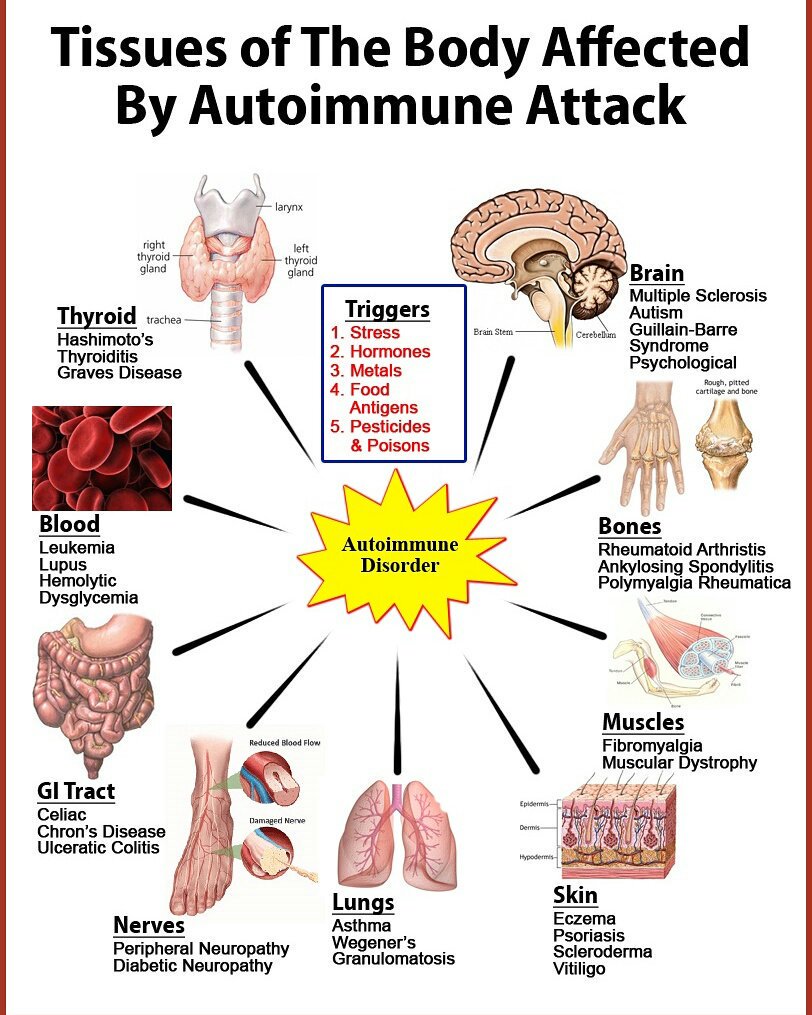
Other cutaneous features of ataxia-telangiectasia include:
- Dry skin
- Grey hair
- Scleroderma (atrophy and sclerosis) of the face, arms and hands
- Recurrent impetigo
- Seborrhoeic dermatitis and blepharitis
- Non-infectious cutaneous granulomas
- Basal cell carcinomas.
Non-cutaneous features of ataxia-telangiectasia include:
- Recurrent bacterial or viral sinus and lung infections
- Immune deficiencies with reduced IgA, IgE and IgG
- Dysarthria (unclear speech) over time
- Deterioration in fine and gross motor skills, with patients, often relying on wheelchairs to mobilise.
Sturge–Weber syndrome
Sturge–Weber syndrome is a rare disorder that involves vascular malformations affecting the face and eye, which correspond with a leptomeningeal angioma, a vascular tumour in the brain. This often causes corresponding neurological and ocular deficits.
Neurological features are progressive and can include seizures, focal neurological deficits and intellectual disability.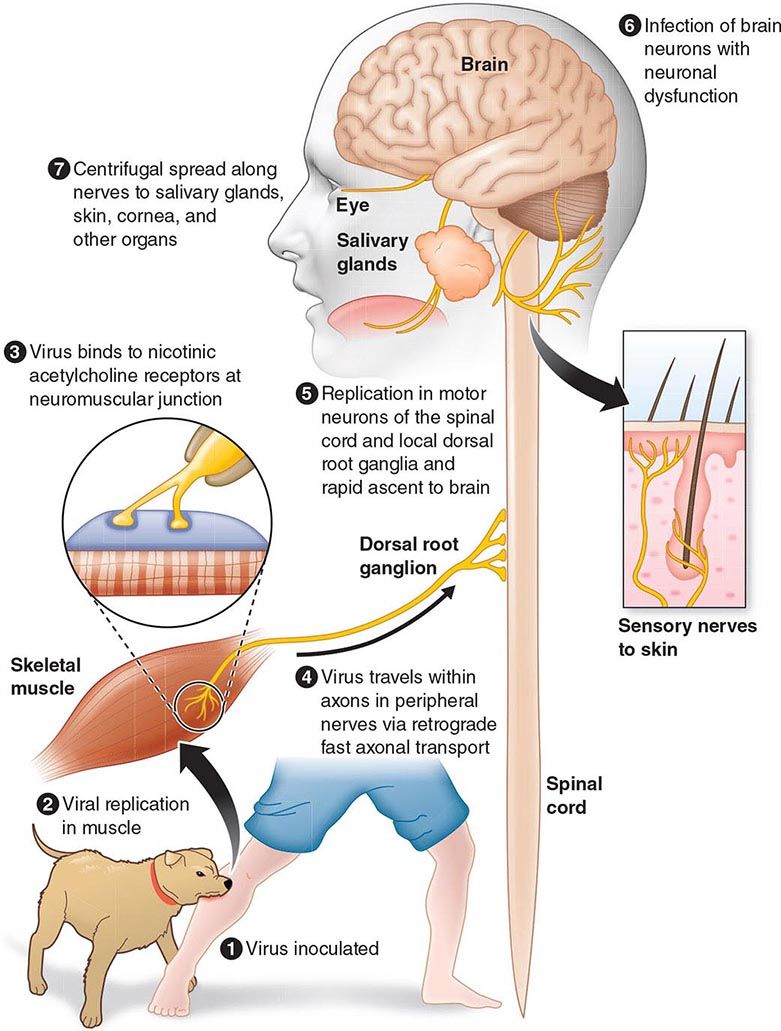 Visual field defects are also common if the occipital cortex of the brain is involved.
Visual field defects are also common if the occipital cortex of the brain is involved.
Sturge-Weber syndrome
Sturge-Weber syndrome
Neuropsychiatric and addiction disorders
Psychiatric disorders are central nervous system conditions with a neurobiological basis. They generally involve disturbances of emotion, cognition, motivation and socialisation. Psychiatric disorders can either lead to psychocutaneous (skin) manifestations as a consequence or they may arise as a result of a chronic dermatological condition that impacts on the patient’s mental health.
Psychocutaneous disorders
There are four main types of primary psychocutaneous diseases.
Delusional disorder
A delusional disorder may present as delusions of parasitosis.
- In such cases, there is a fixed, false belief by the patient that they are infested with parasites.
 This may be the only overt manifestation of psychosis.
This may be the only overt manifestation of psychosis. - Patients present with ‘matchbox sign’ – that is, they present ‘evidence’ of parasites to the clinician in the form of skin crusts, clothing lint or debris (collected in a matchbox or another small container).
- Excoriations and ulcers are the results of the patient’s attempts to eradicate the ‘parasites’.
Delusions of parasitosis
So-called
Factitious disorder
A factitious disorder may present as dermatitis artefacta.
- In these cases, there is intentional skin injury to allow the patient to fall into the ‘sick role’ and assume illness behaviour.
- Lesions can be in any site but are usually in areas readily accessed by the patient.
- The lesions may have sharp/defined borders and cannot be diagnosed as a known skin disease. They are surrounded by completely normal skin.

- Patients fail to provide a clear history of the evolution of the lesions.
- Dermatitis para-artefacta may be a conscious or semi-conscious manipulation of skin, mainly stemming from impulse control problems (eg, trichotillomania is the repetitive pulling of hair).
Dermatitis artefacta
Cigarette burns
Chemical burns
Petechiae due to coining injury
Somatic symptom disorder
Somatic symptom disorder (previously known as a somatoform disorder) may present as cutaneous dysaesthesia.
- Cutaneous dysaesthesia is also known as atypical chronic pain syndrome.
- There is burning, pain or dysaesthesia (unpleasant sensation) from being touched.

- No physical cause for the symptoms is identified.
Compulsive disorder
A compulsive disorder may present as obsessive–compulsive disorder (OCD).
- OCD is an anxiety-related condition associated with repetitive or routine-based behaviours that help the patient to relieve anxiety (eg, compulsive handwashing, compulsive skin picking).
- Compulsive washing can lead to dry skin and irritant contact dermatitis.
- Lichen simplex is a thickened area of the skin resulting from chronic rubbing.
- OCD may also be associated with trichotillomania or skin picking.
Cutaneous signs of a compulsive disorder
Skin picking
Nail fold picking
Trichotillomania
Disorders related to drug abuse
The use and abuse of drugs may cause cutaneous manifestations and skin disease as a result of local and systemic toxic effects from the drugs involved.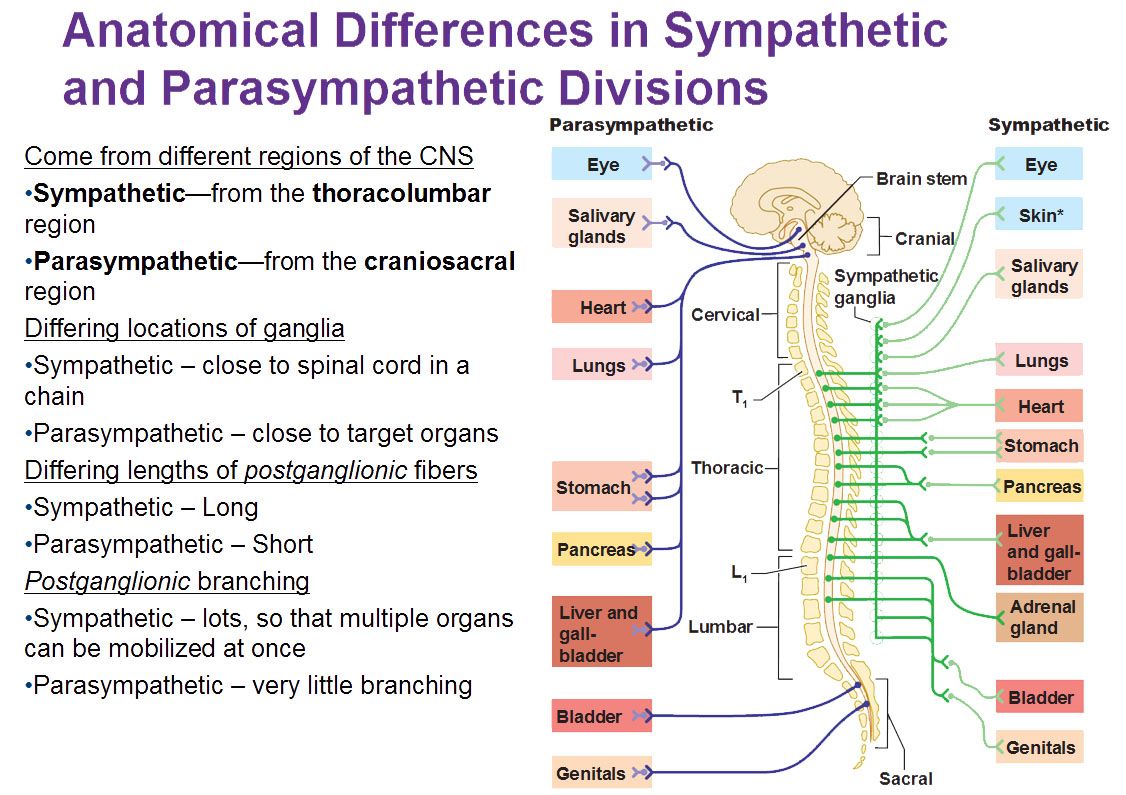
Chronic alcohol abuse and liver disease
- High circulating bilirubin due to liver disease associated with alcohol abuse presents as jaundice (yellow skin).
- The low albumin associated with chronic alcohol abuse and liver failure can cause Muehrcke lines (leukonychia or white lines on nails) and Terry nails (white nails with red tips).
- Alcohol raises oestrogen levels and high oestrogen may result in gynaecomastia (breast enlargement), palmar erythema and telangiectasia.
- The impairment of coagulation factors through heavy alcohol consumption may cause purpura (easy bruising) and bleeding.
Cutaneous signs of alcohol abuse
Jaundice
Terry nail
Palmar erythema
Nicotine and cigarette smoking
- The ‘nicotine sign’ is a yellow/orange discolouration of fingertips and nails from cigarette smoking.

- Fingernail clubbing may indicate chronic lung disease as a result of smoking.
- Smokers also present with signs of premature skin ageing, including wrinkles due to the impairment of elastin and collagen function in the skin.
Cutaneous signs of cigarette smoking
Tobacco staining
Clubbing
Smoker’s lines
Cocaine injected under the skin (‘skin popping’)
- Cocaine use causes skin necrosis, chronic skin ulcers and fibrosis (scarring).
- The skin of cocaine users can also appear atrophic, hypopigmented or hyperpigmented.
Intravenous heroin use
- Heroin users present with ‘track marks’ (linear, cord-like scars following a vascular distribution) from needling.

- Cutaneous nodules, ulcers, panniculitis, skin infections related to intravenous drug use and dermal hardening are all associated with intravenous heroin use.
- ‘Soot tattoo’ — the darkening of the skin from injecting heroin mixed with debris — is also seen in heroin users.
Cutaneous signs of drug abuse
Hyperpigmentation and scarring due to skin infection
Neuropathic itch
Pruritus (itch) can originate from anywhere in the nervous system. Examples of conditions associated with neuropathic itch include:
- Post-herpetic neuralgia — itch or pain that complicates recovery from herpes zoster (shingles)
- Brachioradial pruritus — localised pruritus of the arms as a result of compression of cervical nerve roots (C4–C6)
- Notalgia paraesthetica — localised itch between the shoulder blades as the result of nerve entrapment of the posterior rami of spinal nerves arising at the thoracic vertebrae T2–T6.

- Meralgia paraesthetica – localised itch on the lateral thigh as the result of nerve entrapment of the lateral femoral nerve (L2–L3) under the inguinal ligament.
Neuropathic pruritus
Postherpetic pruritus
Notalgia paraesthetica
Brachioradial pruritus
Types of Neurological Disorders That Affect The Skin
Neurological disturbances are defined as severe diseases resulting from genetic or inheritance factors and prime acquired reasons due to force majeure, incidents, or trauma-concerned circumstances. The severity of such disorders is connected with the complicated nerve ties and the uninvestigated brain functionalities.
Scientists have proven that the initial conjunction between the nerve system and the skin cells is established at the level of embryo development.
The dermatological problems accompany four types of psychological abnormalities:
- depression,
- jitteriness,
- insanity, and
- delusional parasitosis.
All psychodermatological illnesses need the primary correction to prevent more difficult health problems, leading to a more atrabiliary state of the nerve system. Thus, one of the hazardous ailments related to neurological disorders is tuberous sclerosis. Such a disease is caused by a wide range of behavioral, psychological, mental, neuropsychological, and psychosocial problems, which most doctors neglect. However, the clinical trials emphasize that approximately 85% of the examined cases also have epilepsy which quickly affects the weak neurological system. Due to its genetic nature, the tuberous sclerosis complex is well-known in certain medical circles as hardly probable abnormality subject to treatment procedures.
Due to its genetic nature, the tuberous sclerosis complex is well-known in certain medical circles as hardly probable abnormality subject to treatment procedures.
So, the patient could only eliminate some symptoms of this dangerous disease to eradicate this insidious health problem.
Neurology and the skin: triggers, effects, and healing methods
Neurology requires permanent attention and scheduled medical examinations to avoid the various health problems affecting all human organs (brain, skin, lungs, etc.). The most visible and complex nervous effects on the skin or patients have obsessional states that lead to mini or macro self-injured traumas.
Delusional parasitosis
The main signs discover a controversial belief in being invaded or infected with parasites. To be correct, sufferers have fake perceptions like stinging, crawling, or being bitten. They can not distinguish their cues from real crawling perceptions. Therefore, these neurological disorders qualify as the primary psychiatric diseases.
Dysmorphic disorder
Patients have obsessional complaints about their minor defects in appearance. They usually focus on the nose, lips, hair, chest, or genitals. Such patients draw attention to themselves with increased concern about the sensations of their appearance. They are often socially isolated, as all of their attention is on the face (primarily the nose and lips). In addition to particular symptoms, patients often focus on this obsession. Moreover, they are absorbed in skincare, sitting for a long time in front of a mirror and meticulously assessing their appearance.
Artifactual dermatitis
The nature of the disease refers to self-harm actions against the skin, often using some accidental items. The self-damage reactions have no explanation, and patients refuse their role in the skin injuries or rash occurrence.
Neurotic excoriation
They are usually observed in middle-aged women in the form of a repeated uncontrollable desire to pinch, rub, scratch the skin.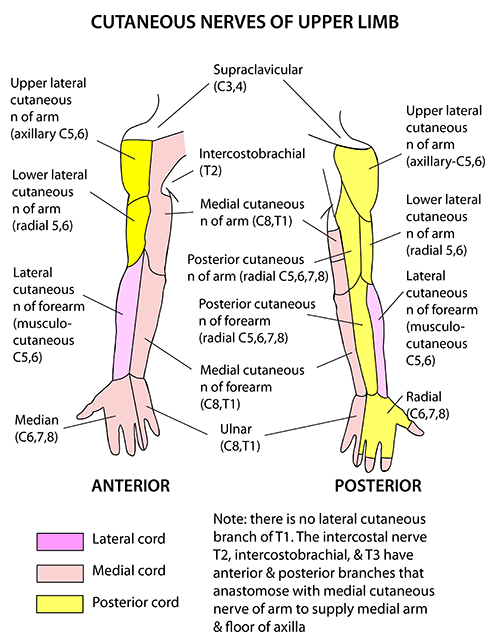 Typically, the scalp, face, upper back, outer forearms, lower legs, and hips are affected, but these manifestations can be anywhere. The size of the lesion can vary from a few millimeters to several centimeters, and its occurrence can be diverse: from small superficial erosions to deep rounded or linear ulcerations with a raised edge and finally to hypo- and hyperpigmented scars.
Typically, the scalp, face, upper back, outer forearms, lower legs, and hips are affected, but these manifestations can be anywhere. The size of the lesion can vary from a few millimeters to several centimeters, and its occurrence can be diverse: from small superficial erosions to deep rounded or linear ulcerations with a raised edge and finally to hypo- and hyperpigmented scars.
Excoriated acne
The neurological diseases frequently jeopardize young women and are characterized by permanent damage to areas of the skin with acne eruptions, which patients squeeze out or tear off. Acne of very moderate severity is accompanied by solid excoriation. The lesions become more profound, which subsequently ends in scarring of the skin.
Trichotillomania
The pathology is expressed in hair pulling on the scalp, eyebrows, eyelashes, and pubic hair. There is an opinion that trichotillomania should be attributed to obsessive compulsions. According to the diagnostic criteria, the patient feels an involuntary desire to touch, pull, rub their hair, bringing them satisfaction and relief.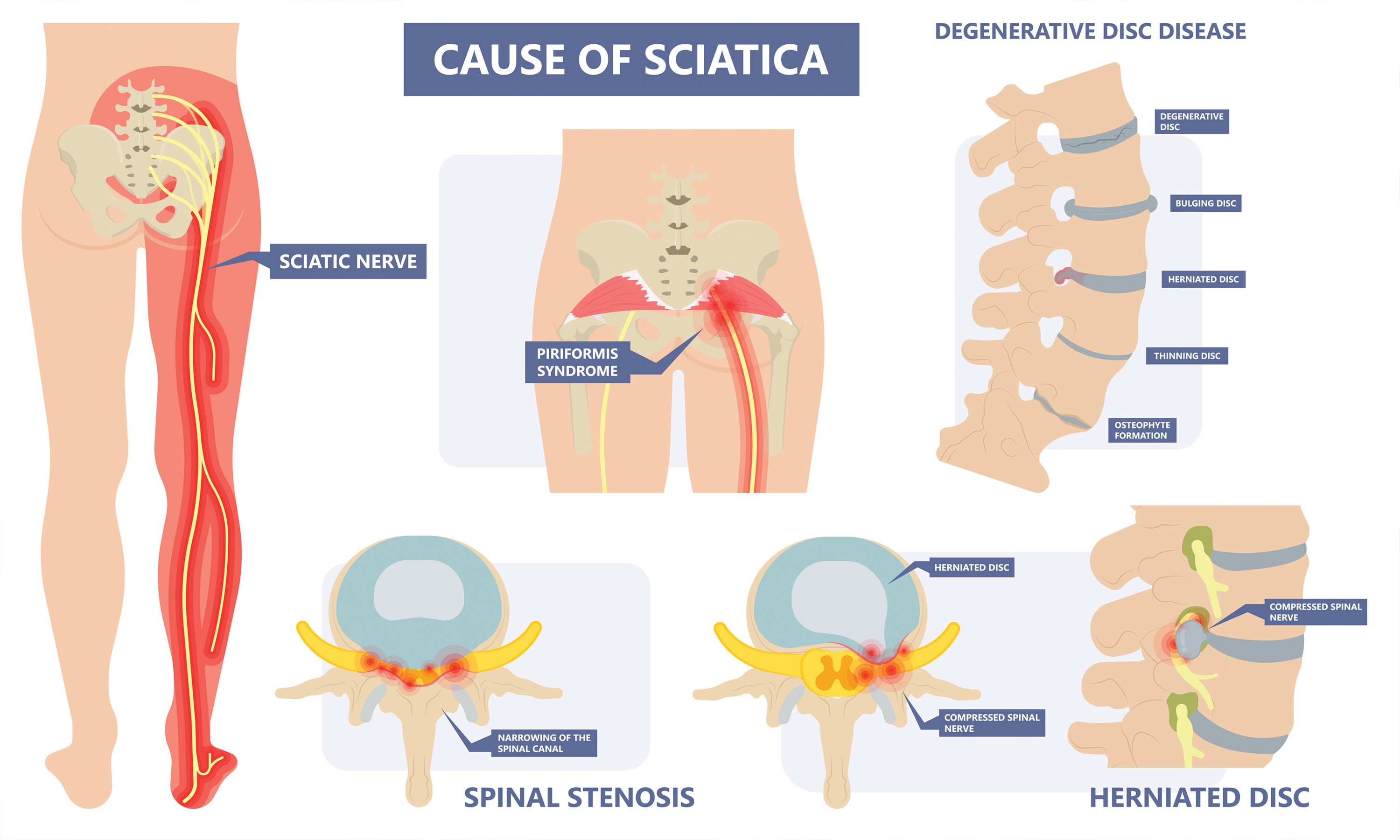
Munchausen syndrome
The history of the disease presented by the patients resembles the nature of far-fetched, excessive drama, and implausibility. Typically, these patients are admitted to the clinic with acute pain, bleeding, loss of consciousness, and other symptoms. Such patients even undergo repeated abdominal surgeries. Complaints can be abdominal, hemorrhagic, neurological, and dermatological. In the case of the cutaneous variant, the patients cause and artificially support skin diseases. This pathology is referred to as behavioral and hypochondriacal disorders.
Nodular prurigo
These neurological diseases are referred to as psychodermatological due to biopsy itching, which is practically regarded as self-destruction.
Lichen simplex chronicus
The disease, as a rule, occurs in adults and designates hyperpigmented lichenified rough patches caused by scratching and rubbing and accompanied by itching. Patches are localized on the back of the neck, extensor surfaces of the forearms, ankle joints, wrists, and genitals. The precursors are xerosis and atopy. The round-shaped patches are usually detected in women’s back of the neck and men’s genital areas.
The precursors are xerosis and atopy. The round-shaped patches are usually detected in women’s back of the neck and men’s genital areas.
The list of the possible neurological diseases affecting the skin or other organ’s functions is not exhausted. That’s why each particular case is unique and needs special tests and diagnostic procedures adequately executed by professional neurologists, dermatologists, psychologists, and so on. So, the treatment plan will be based on the comprehensive examination deliverables.
However, the core factor for all nervous disorders is stress. In this case, physical exercises, mental therapy, and relaxation activities would be effective instruments to reach the comparative normal living conditions.
Otherwise, the clinical interventions would have poor benefits in the case of the inherited brain-affected disorders. They could not entirely be treated, but the qualified remedy procedures dedicated to removing the core signs and symptoms of the accompanying diseases could enhance the healing probability.
Tuberous sclerosis complex: inheritance, signs, and treatment
The comprehensive clinical picture is shocking. The so-called tuberous sclerosis complex is a multisystem genetic disease associated with a wide range of pathological manifestations which affect the brain, skin, kidneys, eyes, and lungs. Nearly 80% of the respective patients have the accompanying health problems and injured organs listed above due to these genetic illness effects. Moreover, 90% of the interviewed sufferers with the confirmed tuberous sclerosis complex have additional neuropsychological abnormalities.
Even though modern neurology has made significant progress in diagnosing and treating many physical manifestations of this disease, neuropsychiatric disorders remain poorly understood. Skin injuries are a single indicator to detect the severity.
Skin symptoms include:
- an initially pale hypopigmented macula that develops during infancy or early childhood;
- angiofibroma of the face set in late childhood;
- congenital pebbled spots meaning enlarged lesions, corresponding to an orange peel, usually on the back;
- subcutaneous nodules;
- areas colored like cafe au lait;
- subungual fibroids that could develop at any time during childhood or early adulthood.

To receive a correct diagnosis, the patient should undergo special tests investigating the genetic prosperities. In particular, both of the following criteria are required:
- identification of pathogenic mutation of either the TSC1 gene or the TSC2 gene in DNA from healthy tissue; and
- 2 extensive features or 1 prominent segment with ≥ 2 minor ones.
The treatment approach should be based on the medical procedures dedicated to comprehensive or local therapy. This approach has a straightforward explanation. TSC is not entirely subject to the whole healing; however, it could eliminate its symptoms. For instance, skin problems are commonly remedied by dermabrasion tools or using a laser technique.
Stress and skin diseases — St. Petersburg State Budgetary Institution of Health “Dermatovenerological Dispensary No. 4”
The skin is highly sensitive to psychogenic and situational influences.
Psychogenic pruritus, localized or generalized hyperhidrosis (sweating) and others tend to regress after stress relief.
There is a group of dermatosis manifestation and subsequent recurrence of which is mediated by mental trauma.
The skin, more often than other body systems, becomes an “accomplice” in mental illness ( neurotic excoriations, trichotillomania, zoopathic delusions, dysmorphophobia, cheilophagy, onychophagia , etc.)
Along with vulnerability to stress, expressed in the form of dermatoses, reverse correlations are also observed.
Chronic dermatological diseases, torpid to therapy, accompanied by severe itching and rashes, with localization in “intimate places”, as well as in open areas of the skin, can themselves be a severe stress and provoke psychogenic disorders.
Zoopathic (dermatozoic) delusions . Patients are convinced that they are infected with scabies or other parasites. They “see”, “feel”, “touch” insects. This state at the present level of knowledge is the subject of discussion. Many researchers consider this a manifestation of an organic lesion of the central nervous system. Others view this condition as part of schizophrenia, its debut.
They “see”, “feel”, “touch” insects. This state at the present level of knowledge is the subject of discussion. Many researchers consider this a manifestation of an organic lesion of the central nervous system. Others view this condition as part of schizophrenia, its debut.
These patients require microscopic and other examinations of materials containing “particles” of insects or parasites.
Epithelium, villi, pellets are filled into special containers (“matchbox symptom”) and presented to the laboratory as larvae, eggs or waste products of parasites.
A negative answer is considered only as a reason to expand the circle of institutions for the provision of “material evidence”.
Pest control, handling disinfection requirements, own methods of control, including “extracting insects from the body” can become self-injurious actions: cauterization, use of scissors, needles, razor blades. These injuries are located on easily accessible areas of the body – the face, upper and lower limbs, the upper third of the back.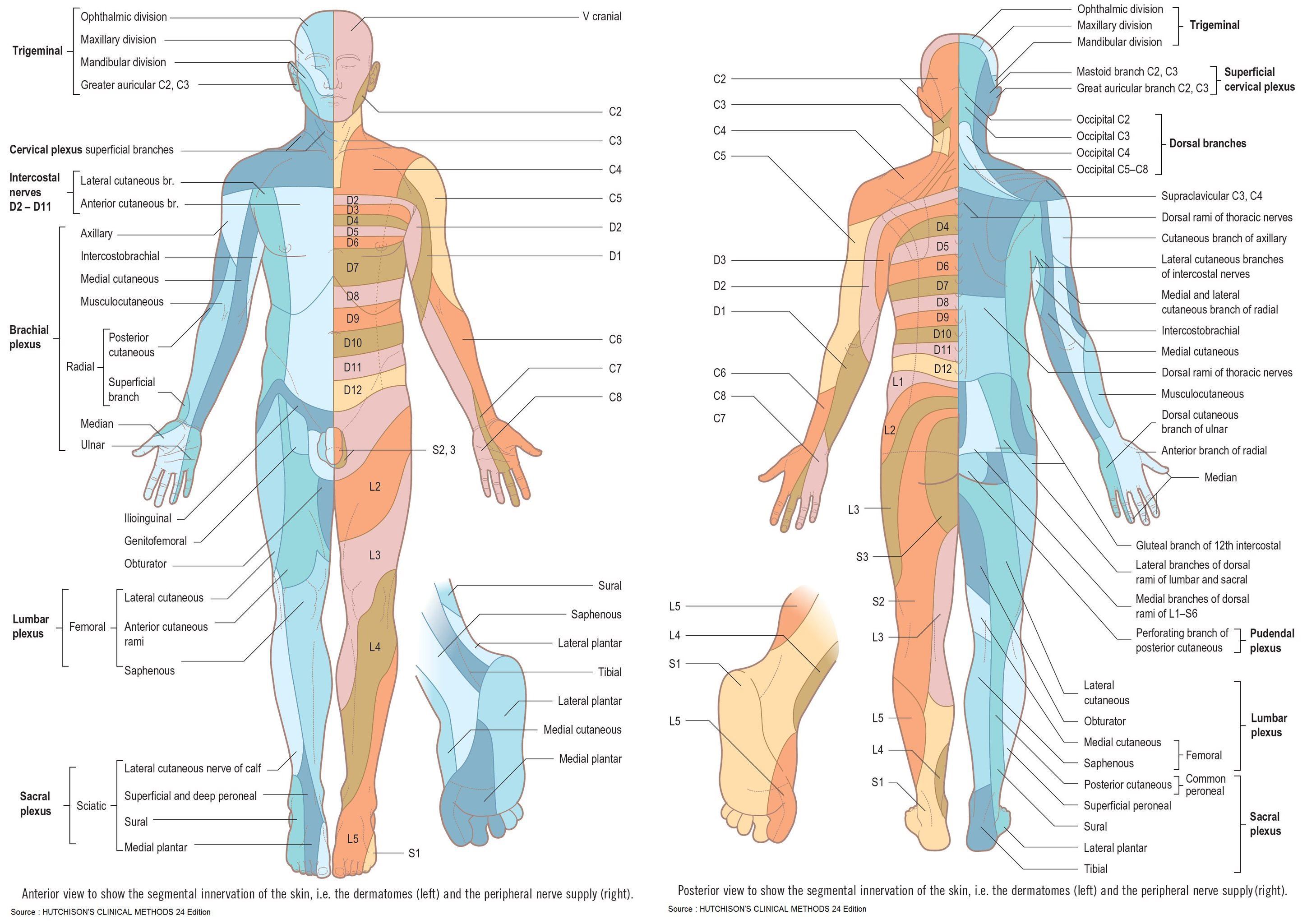
Such patients pay special attention to linen – chemical treatment, washing, boiling, ironing several times a day, changing clothes.
Neurotic (psychogenic) excoriations – actions accompanied by self-harm, which are preceded by feelings of discomfort, itching of the skin.
The desire for repeated combing, the removal of a non-existent rash leads to the formation of fresh excoriations against the background of previously unchanged skin, followed by the formation of scars. Scratching is often preceded by visual inspection or touching the skin. The stage of self-damage (when the crusts are torn off, the skin is combed) is followed by a stage of temporary relief, inner satisfaction. This is followed inevitably by an increase in discomfort. Attempts to prevent or stop scratching are often ineffective.
Excoriated acne differs from neurotic excoriations in that they form against the background of real acne.
In places of systematic scratching, persistent destructive changes in the skin cover develop, accompanied by increased sensitivity to external stimuli. At the same time, erosion, scratching themselves can be accompanied by itching, burning. Thus, the somatic stimuli of scratching are also added to the psychopathological ones.
At the same time, erosion, scratching themselves can be accompanied by itching, burning. Thus, the somatic stimuli of scratching are also added to the psychopathological ones.
Voynilko M.V.
Neurologist called stress one of the causes of skin diseases – Gazeta.ru
Neurologist called stress one of the causes of skin diseases – Gazeta.Ru | News
close
100%
The skin is the largest organ on the body, which is closely intertwined with the central nervous system, and they actively influence each other. There is a group of skin diseases that occur in connection with psycho-emotional tension and stress, Galina Smirnova, a neurologist at Invitro-Voronezh, told Gazeta.Ru.
So, according to the doctor, stress factors provoke a decrease in the barrier and immune functions of the skin, activation of inflammatory processes, slowing down DNA repair and healing of damage. All this leads to an increase in dryness and sensitivity of the skin, an acceleration of aging, as well as an exacerbation of dermatological diseases.
All this leads to an increase in dryness and sensitivity of the skin, an acceleration of aging, as well as an exacerbation of dermatological diseases.
“Skin diseases such as seborrheic and atopic dermatitis, psoriasis, neurodermatitis, eczema, alopecia, psychogenic itching are especially dependent on the stress factor.
In addition, the result of a long-term effect of stress is the development of inflammatory reactions and the activation of opportunistic flora. Psychogenic itching is associated with mental disorders. It is often accompanied by tactile hallucinations and complaints of a “crawling” sensation, bites in the absence of visible skin damage, ”she explained.
Stress also often causes hair loss (alopecia), which is associated with inflammation in the hair follicles, as well as persistent or temporary non-scarring hair loss. The most frequently recorded form of hair loss is focal, or alopecia areata. Hair can fall out not only on the head, but also on the body, eyebrows and eyelashes, the expert clarifies.
“The manifestation of stress in the form of skin diseases is more prone to people who have a genetic predisposition, who are in constant tension, both mentally, psychologically and physically, who have a chaotic daily routine, sleep disturbances, unbalanced nutrition, diseases of the digestive system, endocrine and nervous systems, prone to bad habits,” added Smirnova.
Previously, Gazeta.Ru wrote about problems with reproductive function due to stress.
Subscribe to Gazeta.Ru in News, Zen and Telegram.
To report a bug, select the text and press Ctrl+Enter
News
Zen
Telegram
Anastasia Mironova
For an abortion: how many women in Russia terminate a pregnancy
We have fewer abortions than in religious Poland, leave behind our women
Evgeny Zaramenskikh
Why does Russia need its own drones?
Where drones are most actively used in Russia


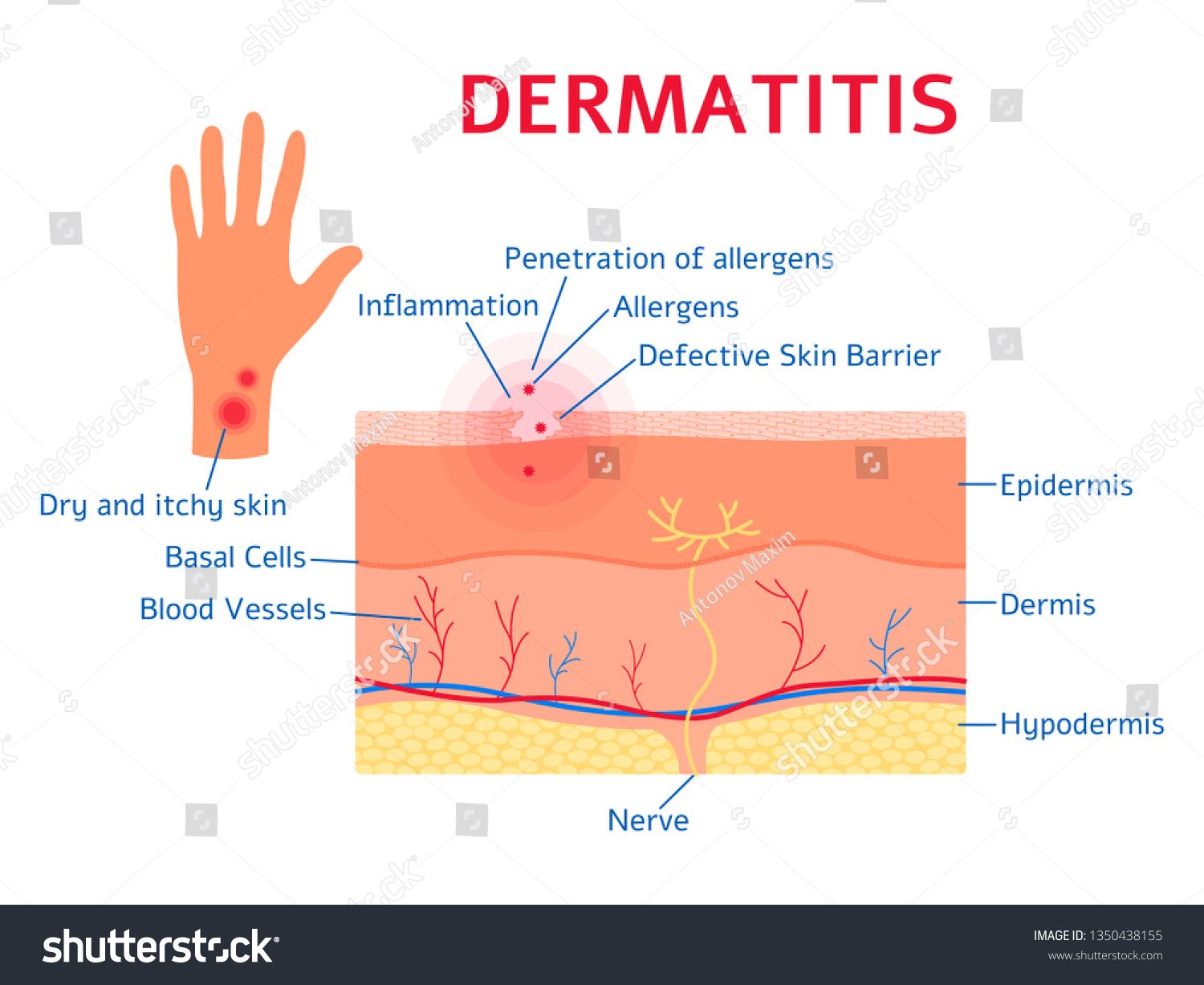
 This may be the only overt manifestation of psychosis.
This may be the only overt manifestation of psychosis.
